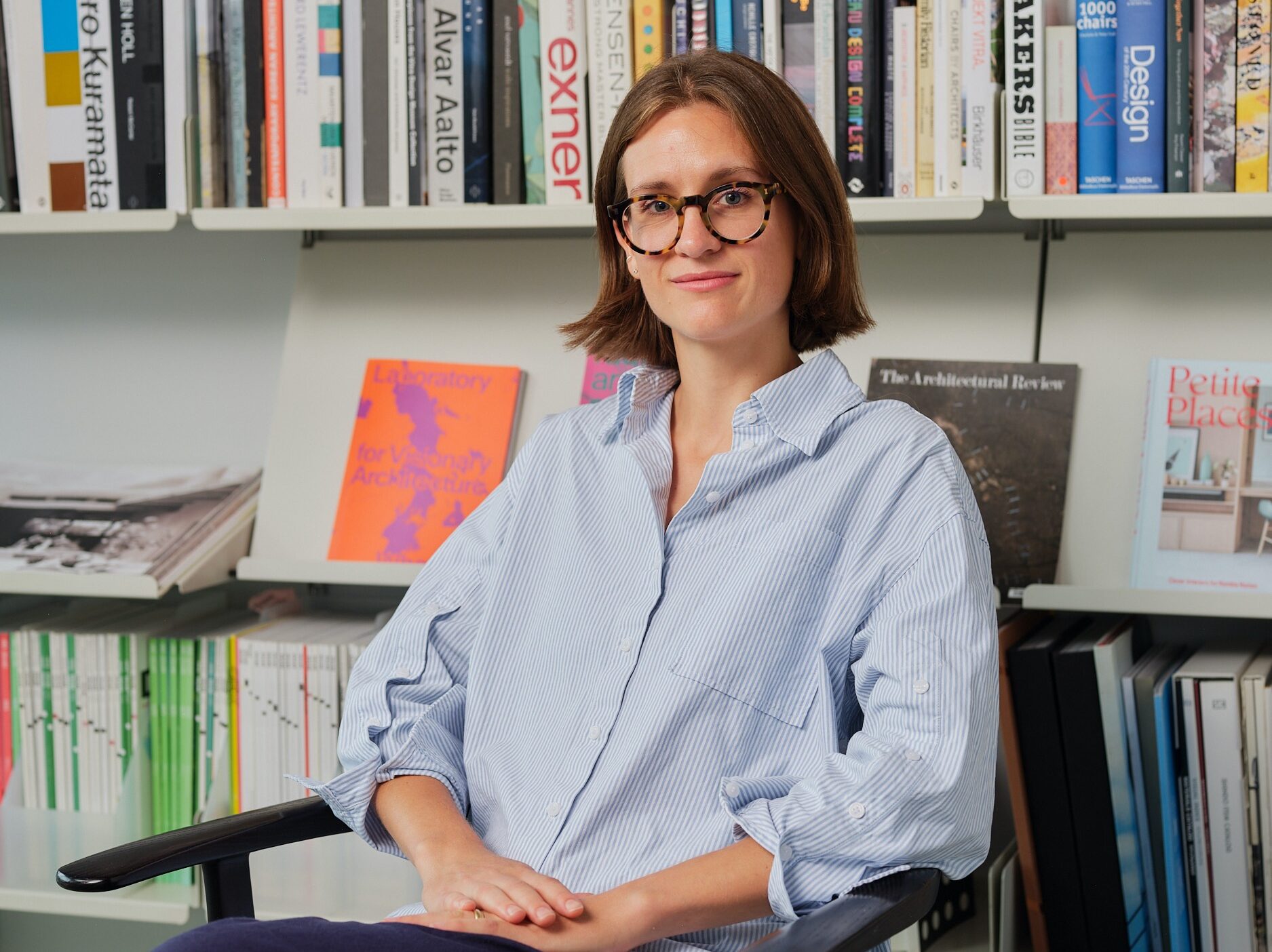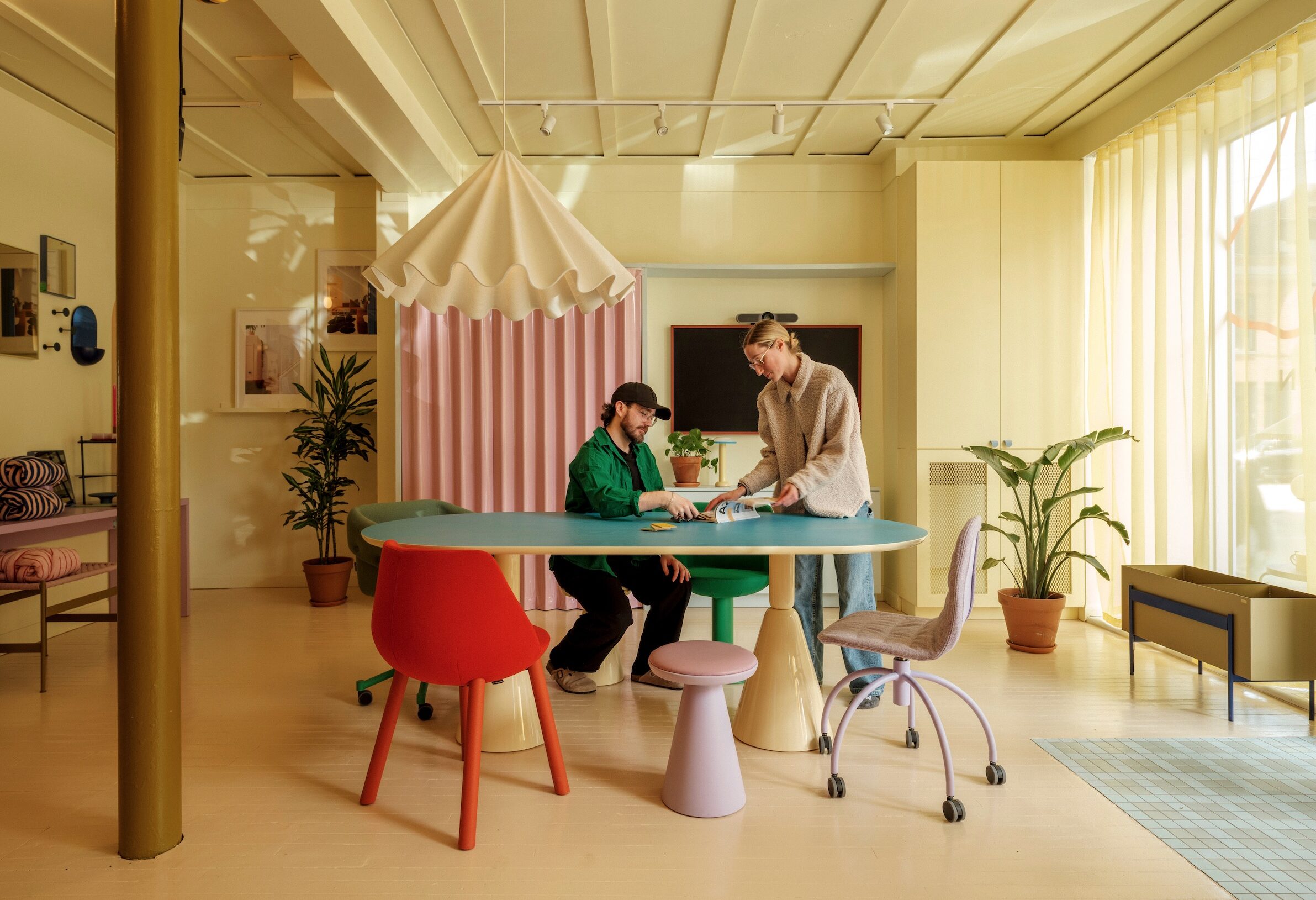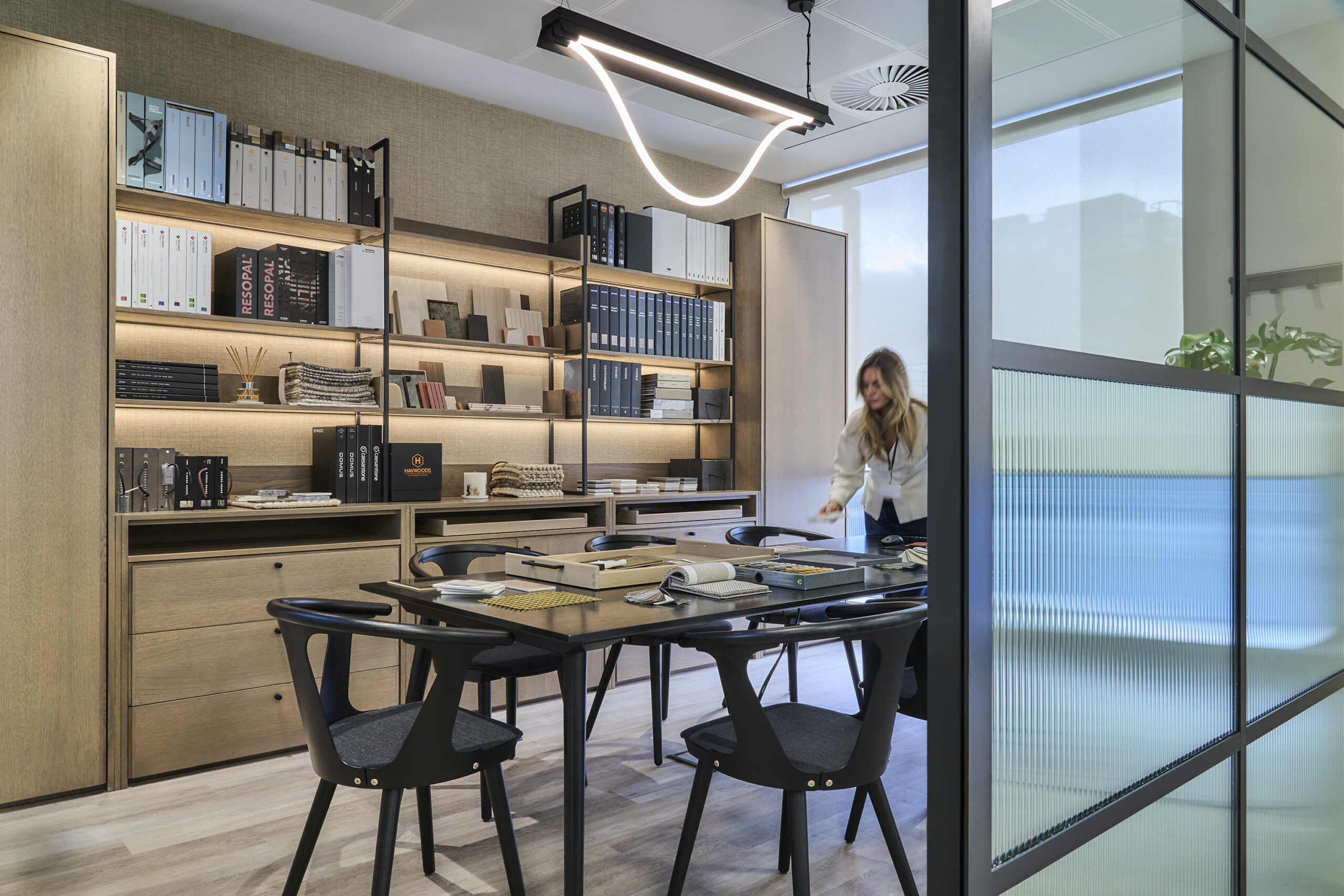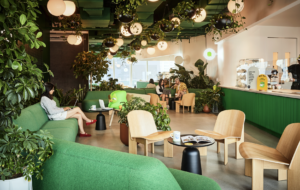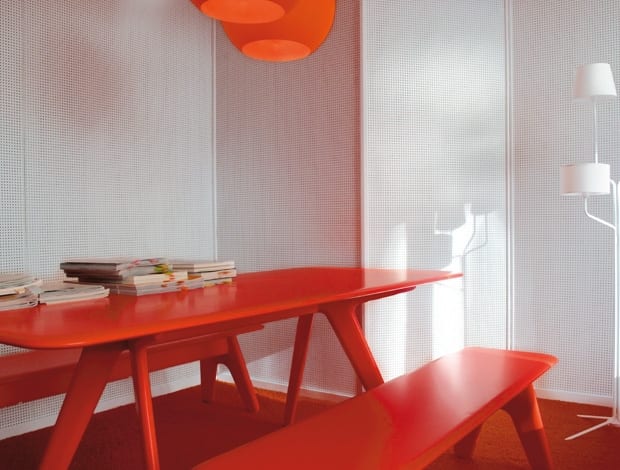 Tom Dixon’s fluoro Slab table and bench, framed by pegboard to hang clothes on|Each floor has its own “cottage” conference rooms, with their own personality|Make your point: pencil-clad pegboard walls|The tongue-and groove MDF panelling was inspired by rural Scandinavian cottages|Walls made from notepads encourage creativity: just peel off when you’re done||
Tom Dixon’s fluoro Slab table and bench, framed by pegboard to hang clothes on|Each floor has its own “cottage” conference rooms, with their own personality|Make your point: pencil-clad pegboard walls|The tongue-and groove MDF panelling was inspired by rural Scandinavian cottages|Walls made from notepads encourage creativity: just peel off when you’re done||
Who doesn’t love a bit of colour, eh? The new office for fashion group Fabric Retail is awash with it. Red, yellow, green, blue, white, black, grey – all are hues to be found in varying degrees of intensity in this new workplace in central Gothenburg. The space sits within a three-storey, early-20th-century building, which has been spruced up to house a trio of companies that are part of the H&M group.
The inspiration for the scheme, says Catharina Frankander, one half of Swedish design duo Electric Dreams, was the idea of traditional Scandinavian cottages. “We decided to treat the entire office like a small village, because we believe the office performs like a town, with different professions, different things happening at different times,” she says. Hence the project’s eventual name – Fabricville.
When Electric Dreams first came on board, the 1,500sq m office bore none of the building’s original details. It had been divided up into several spaces and had scars from less-than-savoury renovations from the 1980s and 90s. There were endless dull corridors with a mishmash of windows and door types, plus assorted ceiling heights, making it hard to know which part of the building one was in. The office needed a major overhaul. “It was basically a nightmare, but we took all of these disadvantages and then turned them into a concept,” explains Frankander. “We took everything out and started over.”
There wasn’t much time to spare, with only one week for Frankander and partner Joel Degermark to come up with the drawings, and four weeks to turn it around on site. Fabric Retail’s 150 staff are a mix of fashion designers, buyers, construction managers and PRs, says Frankander, so the scheme needed to consider all of their varying needs while giving a sense of cohesion. “We wanted to bring it all together in one visual identity, to house a family of fashion brands, each with its own personality.”
To make the three floors feel like a whole, Electric Dreams applied facades made of MDF board replete with a layer of “hedges” in all of the corridors, to lend a village-like feel. The colour schemes on each floor reflect the brand identity or spirit of the group housed on it; the first floor, for Fabric Retail itself, is primarily white. Monki clothing brand was given lashings of red on the second floor, and up top on the third floor is Weekday, which uses more sedate timber and black.
While the wow factor (and most of the personality) comes from the vibrant conference room ‘cottages’ on each of the levels, Electric Dreams tried to make these spaces work a bit harder. Monki’s red meeting room has pegboard walls so that hangers can be used. “It’s more of a display room for the garments in their collections,” says Frankander. The same thinking was applied to the white meeting room on the Fabric Retail floor, where pencils have been inserted into the pegboard holes, to be used as hooks. Monki’s yellow and green rooms have big notepads stapled on the walls for teams to sketch on. “You can always make blank canvas by taking everything down and starting over,” Frankander adds. Weekday’s meeting space, which has black-painted foam balls attached to the ceiling, has magnetic walls and letters that can
be whimsically rearranged.
The main workspaces have been kept quite generic, says Frankander, because they’re more focused on the personality and self-expression of employees, to the extent that they are allowed to bring in their own vintage furniture. Simple white tables with black bases are used as desks, and the rest is left up to staff.
“It was not a super-high budget, but we worked around it in a way that allowed us not to compromise with any important design elements,” Frankander says. Apparently the biggest cost was covering all the corridors in the panels, even though the designers found a 6mm standard board that didn’t cost much.
“We had a lot of discussions with the client and spent a lot of time thinking and finding the right materials to make the budget quite acceptable for the client,” she adds. “It’s H&M prices. These brands are not Gucci or Prada, so it’s probably a similar philosophy – best design for the lowest price.”

